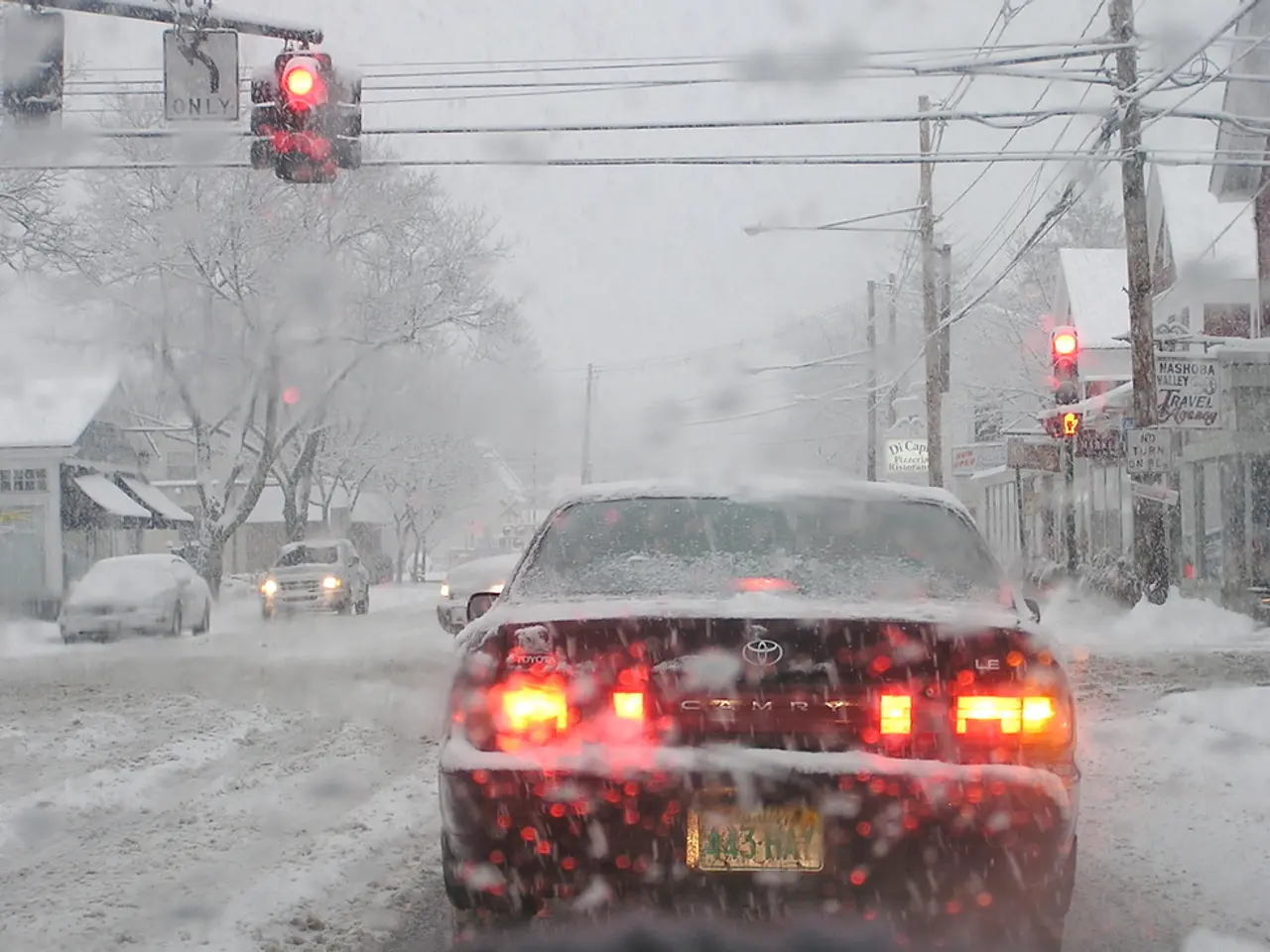Guide on Reinstating a Driveway: DIY Options and Time Frame for Using Vehicles Afterwards
Resurfacing a driveway is an effective way to renew its appearance and functionality, often at a lower cost than replacement. This article outlines the typical steps involved in resurfacing a driveway, factors to consider before starting the project, and the unique requirements for various driveway materials.
Common Steps for Resurfacing a Driveway
- Initial Inspection and Preparation: Assess the driveway's condition to identify damage levels. Remove debris, dirt, oil stains, and vegetation using tools such as brooms, leaf blowers, or pressure washers. Ensure the surface is completely clean and dry before proceeding.
- Surface Cleaning: Sweep, power wash, and dry the driveway to prepare it for resurfacing. This step is crucial for the adherence of resurfacing materials.
- Repairing Major Damage: Fix any potholes, cracks, or other damages by filling and patching them with appropriate materials like hot mix asphalt or concrete patches. Major holes or sunken slabs may require specialized repair methods such as mud jacking or concrete lifting before resurfacing.
- Milling (for Asphalt): In some cases, the top layer of the asphalt may be milled or ground down to create a smooth base for the new surface layer.
- Resurfacing Application: Apply a thin new layer of asphalt or concrete over the prepared and repaired driveway surface, creating a fresh, even, and sealed topcoat. This can involve spreading hot asphalt or a concrete overlay, depending on the driveway type.
- Curing and Sealing: Once the resurfacing layer is applied, it must cure properly (often 24-48 hours). For asphalt driveways, applying a sealcoat after the new surface has set helps protect it from weather and wear.
Factors to Consider Before Resurfacing
- Extent of Damage: If the driveway has large cracks, sunken slabs, or significant structural issues, patching or resurfacing may be insufficient, and replacement or mud jacking might be necessary.
- Driveway Material: Different materials (asphalt, concrete, stamped concrete) require different resurfacing products and techniques.
- Cost: Resurfacing typically costs less than full replacement but varies depending on damage severity, area size, and whether decorative finishes are desired.
- Subsurface Conditions: Adequate sub-base stability is crucial; if soil or base layers have degraded, resurfacing alone won't be a lasting fix.
- Timing and Weather: Resurfacing should be done in optimal weather conditions—warm, dry periods—to ensure proper curing and adhesion.
- Longevity and Maintenance: Resurfacing extends driveway life but requires ongoing maintenance (such as sealcoating for asphalt) to maximize durability.
Material-Specific Considerations
Asphalt Driveways
- Overlooking drainage is a common mistake in driveway design, which can lead to water accumulation, potential structural damage, and cracks.
- For driveways on a slight incline, hard-wearing drainage systems or interconnecting drainage channels can be incorporated to collect water and comply with SuDS legislation.
Gravel Driveways
- Maintaining a gravel driveway requires regular top-ups of stones and occasional weeding, even with a membrane installed.
- For a gravel driveway, a weed membrane and gravel stabilization grids are often used to prevent plants from growing and keep the gravel in place.
Block Paving
- Block paving requires edge restraints, a layer of damp sharp sand, and kiln-dried sand for proper installation.
Resin-Bound Driveways
- Resin-bound driveways are laid on top of a base layer, and the resin and stone aggregates are mixed before being poured onto the driveway.
Professional Help and Timing
- It's advisable to seek professional help for complex materials like tarmac, cobbling, and resin-bound driveways.
- The typical periods to wait before driving on a resurfaced driveway are: tarmac (3 days), concrete (7 days), block paving (3 days), cobbles (3 days), and resin-bound driveway (3 days).
Fresh Driveway Ideas
- Fresh driveway ideas can revive a worn, stained, poorly draining, or weed-infested drive.
- Resurfacing can ensure the drive complements the style of the house and provides a parking space.
- Resurfacing a driveway can enhance a home's kerb appeal.
Expert Advice
- Building expert Paul Kerr at Beatsons Building Supplies suggests that starting from scratch may be the longest-lasting option for a driveway with significant cracking and visible issues.
Importance of Drainage
- Overlooking drainage is a common mistake in driveway design, which can lead to water accumulation, potential structural damage, and cracks.
- Drainage is a crucial consideration when resurfacing a driveway to prevent long-term damage and comply with sustainable urban drainage (SuDS) legislation.
- Permeable paving is a suitable solution for driveways on a flat plain to help water drain away.
- Upgrading a home-and-garden environment can be achieved by enhancing the aesthetics and functionality of outdoor spaces, such as resurfacing a driveway.
- For better home-and-lifestyle integration, consider fresh driveway ideas that can revive a worn drive and complement the style of your home, ultimately improving kerb appeal.




